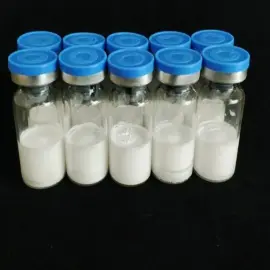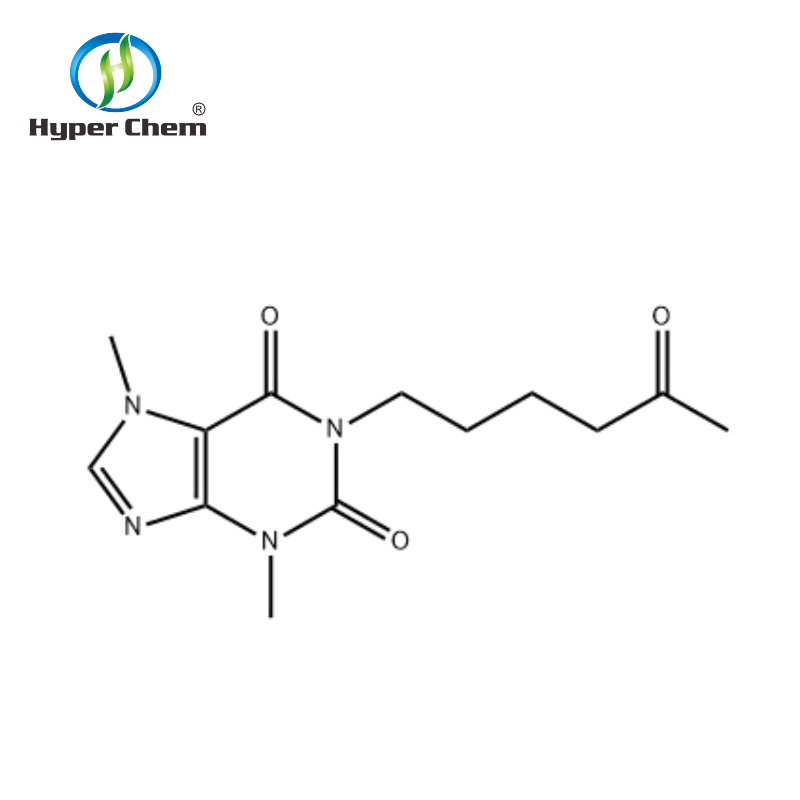-
The Instruction of Urapidil hydrochloride
Time of Update: 2023-05-07
Urapidil hydrochloride is a hazardous compound and requires proper handling and storage to prevent accidents and injuries.
Urapidil hydrochloride is a hazardous compound and requires proper handling and storage to prevent accidents and injuries.
-
The Instruction of Nicardipine hydrochloride
Time of Update: 2023-05-07
In the chemical industry, it is used as a raw material for the production of various chemical comp Nicardipine hydrochloride is a calcium channel blocker medication that is primarily used to treat hypertension, angina, and certain heart rhythm disorders.
-
The Upstream and Downstream products of Fasudil hydrochloride
Time of Update: 2023-05-07
The market for Fasudil hydrochloride and its downstream products is expected to grow significantly in the coming years, driven by the increasing demand for life-saving drugs.
The market for Fasudil hydrochloride and its downstream products is expected to grow significantly in the coming years, driven by the increasing demand for life-saving drugs.
-
The Applications of Nicardipine hydrochloride
Time of Update: 2023-05-07
It has a wide range of applications in the chemical industry, including as a pharmaceutical excipient, a research chemical, and as a building block for the synthesis of other chemicals.
-
The Upstream and Downstream products of Urapidil hydrochloride
Time of Update: 2023-05-07
The synthesis process typically involves the reaction of two or more chemicals to produce urapidil hydrochloride.
The synthesis process typically involves the reaction of two or more chemicals to produce urapidil hydrochloride.
The synthesis process typically involves the reaction of two or more chemicals to produce urapidil hydrochloride.
-
The Instruction of 1-Piperazineethanol, 4-(2-methoxyphenyl)-α-[(1-naphthalenyloxy)methyl]-, hydrochloride (1:2)
Time of Update: 2023-05-07
1-Piperazineethanol, 4-(2-methoxyphenyl)-α-[(1-naphthalenyloxy)methyl]-, hydrochloride (1:2) is widely used in various applications in the chemical industry.
1-Piperazineethanol, 4-(2-methoxyphenyl)-α-[(1-naphthalenyloxy)methyl]-, hydrochloride (1:2) is widely used in various applications in the chemical industry.
1-Piperazineethanol, 4-(2-methoxyphenyl)-α-[(1-naphthalenyloxy)methyl]-, hydrochloride (1:2) is widely used in various applications in the chemical industry.
-
The Safety of Fasudil
Time of Update: 2023-05-07
To minimize the risks associated with Fasudil, it is important to follow all safety guidelines and regulations when handling this chemical compound.
To minimize the risks associated with Fasudil, it is important to follow all safety guidelines and regulations when handling this chemical compound.
-
The Synthetic Routes of Fasudil hydrochloride
Time of Update: 2023-05-07
The development of various synthetic routes for fasudil hydrochloride has been crucial for the production of this pharmaceutical compound on a large scale.
The development of various synthetic routes for fasudil hydrochloride has been crucial for the production of this pharmaceutical compound on a large scale.
-
The Upstream and Downstream products of Nisoldipine
Time of Update: 2023-05-07
The main downstream products include: Nisoldipine: Nisoldipine is the final product that is used to treat hypertension, angina, and other cardiovascular conditions.
The main downstream products include: Nisoldipine: Nisoldipine is the final product that is used to treat hypertension, angina, and other cardiovascular conditions.
-
The Production Process of Urapidil hydrochloride
Time of Update: 2023-05-07
The production process of Urapidil hydrochloride involves several steps, from the synthesis of the active ingredient to the final formulation of the drug.
The production process of Urapidil hydrochloride involves several steps, from the synthesis of the active ingredient to the final formulation of the drug.
-
The Safety of Fasudil hydrochloride
Time of Update: 2023-05-07
Companies in the chemical industry must carefully evaluate the risks associated with using Fasudil hydrochloride and take appropriate measures to ensure the safety of their employees and the environment.
-
The Applications of Fasudil hydrochloride
Time of Update: 2023-05-07
It is widely used as a catalyst in various chemical reactions and as a reagent in the synthesis of various organic compounds.
It is widely used as a catalyst in various chemical reactions and as a reagent in the synthesis of various organic compounds.
-
The Synthetic Routes of Fasudil
Time of Update: 2023-05-07
In addition to the above-mentioned routes, there are also other synthetic methods that have been developed for the synthesis of fasudil, such as the use of microwave-assisted synthesis, flow chemistry, and green chemistry methods.
-
The Safety of Lacidipine
Time of Update: 2023-05-07
It is also important to note that lacidipine is not the only solvent available for use in the chemical industry.
It is also important to note that lacidipine is not the only solvent available for use in the chemical industry.
-
The Safety of Nicardipine hydrochloride
Time of Update: 2023-05-07
Proper safety measures and strict adherence to safety protocols are essential to prevent exposure and protect the environment from the potential harm caused by this drug.
Proper safety measures and strict adherence to safety protocols are essential to prevent exposure and protect the environment from the potential harm caused by this drug.
-
The Instruction of Manidipine
Time of Update: 2023-05-07
The proper use and handling of Manidipine is essential for safe and efficient operations in the chemical industry.
The proper use and handling of Manidipine is essential for safe and efficient operations in the chemical industry.
-
The Synthetic Routes of Barnidipine hydrochloride
Time of Update: 2023-05-07
The classic synthesis route of Barnidipine hydrochloride involves the reaction of 2,6-diamino-p-quinone with a substituted 1,4-dioxane in the presence of hydrochloric acid and sodium nitrite.
The classic synthesis route of Barnidipine hydrochloride involves the reaction of 2,6-diamino-p-quinone with a substituted 1,4-dioxane in the presence of hydrochloric acid and sodium nitrite.
-
The Applications of Manidipine
Time of Update: 2023-05-07
Manidipine helps in improving the color intensity and stability of these dyes, making them more suitable for various industrial applications.
Manidipine helps in improving the color intensity and stability of these dyes, making them more suitable for various industrial applications.
-
The Upstream and Downstream products of Urapidil
Time of Update: 2023-05-07
Urapidil is added to the mixture of chemicals that are used to produce polyurethanes, and it helps to improve the overall performance of the polymer by making it more soluble and stable in water-based solutions.
-
The Synthetic Routes of Nicardipine hydrochloride
Time of Update: 2023-05-07
Overall, the synthetic routes for nicardipine hydrochloride involve the use of a variety of chemical reactions and methods.
Overall, the synthetic routes for nicardipine hydrochloride involve the use of a variety of chemical reactions and methods.







